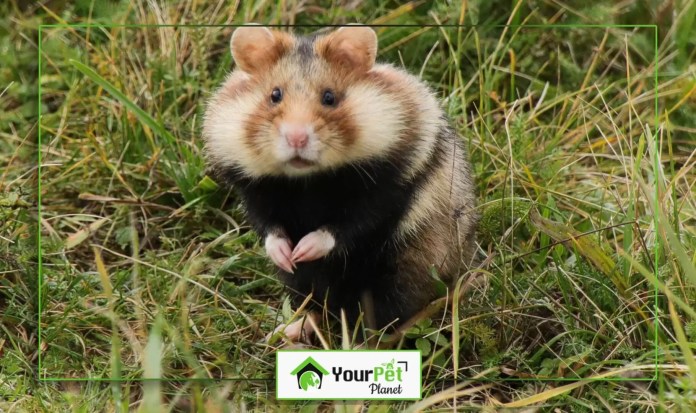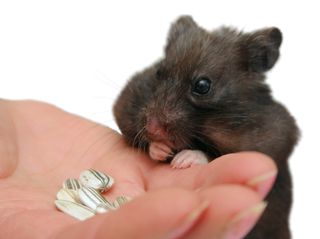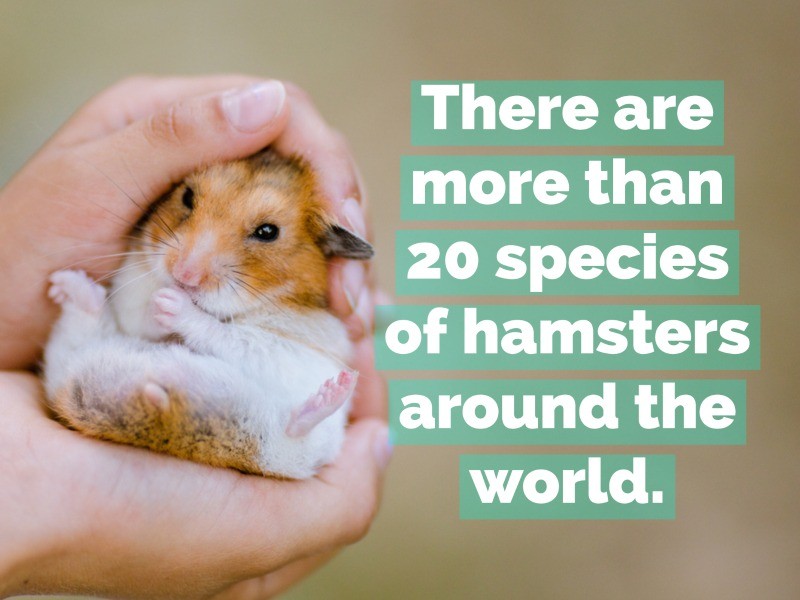Hamsters are one of the most beloved and popular small pets in the world. They are known for their cute and fluffy appearance, making them irresistible to many people. But there is more to these tiny creatures than just their adorable looks. In this article, we will delve into the fascinating world of hamsters and discover some interesting facts about them.
Hamsters belong to the rodent family, which also includes rats, mice, and guinea pigs. They are native to parts of Europe and Asia but have become widely domesticated around the world as popular pets. These small, nocturnal animals have unique habits, behaviors, and physical attributes that make them stand out from other pets.
So let’s take a closer look at these endearing creatures and uncover some interesting hamster facts.
>> READ MORE:
- Finding the Perfect Pocket Pal A Guide to the Best Hamster Breeds
- Creating the Perfect Hamster Habitat
- Unlocking the Heart of Your Tiny Companion How to Get Your Hamster to Like You
- The Art of Hamster Happiness A Comprehensive Guide to Creating a Thriving Habitat
Unveiling the Hamster’s Unique Habits and Behaviors

Nocturnal Creatures with Busy Days
Hamsters are nocturnal animals, which means they are most active at night. This is because their natural habitat in the wild is underground, where it’s dark and safe from predators. As such, hamsters have developed a keen sense of hearing and smell to navigate their surroundings in the dark.
During the day, hamsters tend to sleep or rest in their burrows. But don’t be fooled by their seemingly lazy behavior. Hamsters are actually very active creatures, and they can run up to five miles every night in the wild. This is due to their high metabolism and constant need to forage for food. In captivity, hamsters still maintain their nocturnal habits, so it’s important to provide them with enough quiet time during the day to rest and recharge.
Social Yet Solitary Animals
While hamsters are social animals, they prefer to live alone in captivity. In the wild, hamsters live in colonies, but they have a strict hierarchy and tend to be territorial. This is why it’s not recommended to house multiple hamsters in the same cage, as it can lead to aggression and even fatal fights.
However, this doesn’t mean that hamsters don’t enjoy interaction with their human companions. They are very curious creatures and love to explore and play. With proper handling and socialization, hamsters can bond with their owners and become friendly and affectionate pets.
Hoarders by Nature
One of the most fascinating habits of hamsters is their instinct to hoard food. In the wild, hamsters have to store food for the winter months when food is scarce. This natural behavior has carried over into captivity, where they will still hoard any available food, often in their cheek pouches.
Hamsters have expandable cheek pouches that they can fill up with food and carry back to their burrow. It’s not uncommon for a hamster to have a bulging cheek pouch while still nibbling on more food. This hoarding behavior also helps them feel secure and provides them with mental stimulation.
The Anatomy and Physiology of Hamsters: A Closer Look

Now that we’ve explored some of the unique habits and behaviors of hamsters let’s delve into their anatomy and physiology. Understanding the physical characteristics of these animals can help us better care for them as pets.
Small but Mighty
Hamsters are small animals, typically growing to a maximum length of around six inches. Despite their tiny size, they have powerful hind legs that allow them to run at high speeds. Their front paws have sharp claws that they use for digging and climbing, while their teeth never stop growing, allowing them to gnaw on hard objects and chew through seeds and nuts.
Hamsters come in different colors and patterns, depending on the species. The most common pet hamsters are the Syrian hamster, which has golden fur, and the Dwarf hamster, which comes in a variety of colors like gray, white, and brown. Interestingly, hamsters can change their fur color depending on the season, becoming darker in the winter to blend in with their surroundings.
Heartwarming Hamster Facts
Hamsters have some truly amazing physical abilities that make them stand out among other pets. For example, they can rotate their ears 360 degrees, allowing them to hear predators from any direction. They also have large eyes positioned high on their heads, giving them a wide field of vision to spot potential dangers.
One of the most heartwarming facts about hamsters is that they have cheek pouches to carry their babies when they need to move them to a safer location. This shows how protective and nurturing they are as parents.
Caring for Your Hamster: Diet, Housing, and Enrichment

Now that we’ve learned more about hamsters’ natural habits and unique anatomy let’s explore how to take care of these adorable creatures as pets. Proper care and attention are crucial to ensure the health and happiness of your hamster.
A Balanced Diet is Key
The diet of a hamster should consist mainly of commercial hamster food, which can be found at pet stores or online. These pellets contain all the necessary nutrients that your hamster needs to stay healthy. You can also supplement their diet with fresh fruits and vegetables, but it’s important to introduce new foods gradually to avoid digestive issues.
Additionally, hamsters love to chew, so it’s essential to provide them with dental-friendly food like hay, wooden chews, and hard seeds. This will help keep their teeth healthy and prevent overgrowth.
The Perfect Habitat for Your Hamster
Choosing the right housing for your hamster is crucial for their well-being. A cage that is too small can cause stress and behavioral issues, while a cage that is too big can make it challenging to find your hamster. A general rule of thumb is to have at least two square feet of floor space for every hamster you own.
The cage should also have plenty of ventilation, as hamsters are susceptible to respiratory problems. As they are natural burrowers, providing them with deep bedding will allow them to dig and create tunnels, which helps stimulate their natural behavior.
Enrichment Activities for a Happy Hamster
Hamsters are very active animals, so it’s important to provide them with enough opportunities for exercise and mental stimulation. Some ideas for enrichment activities include adding a wheel or a hamster ball to the cage for them to run in, hiding treats around the cage for them to find, and creating a maze out of cardboard tubes for them to navigate.
It’s also essential to interact with your hamster daily by handling them gently and providing them with toys to play with outside of their cage. This will help strengthen the bond between you and your pet and prevent them from becoming bored or lonely.
Common Health Issues and How to Prevent Them

As with any pet, hamsters can experience health issues that require proper care and attention. Being aware of the common health problems in hamsters and how to prevent them can help keep your furry friend healthy and happy.
Dental Problems
As mentioned earlier, hamsters’ teeth never stop growing, and this can lead to dental issues if not managed properly. Overgrown teeth can cause discomfort and even prevent your hamster from eating. It’s important to provide your hamster with hard foods to chew on and take them to the vet if you notice any signs of difficulty eating.
Respiratory Infections
Hamsters are prone to respiratory infections, especially if kept in unventilated cages or exposed to drafts. Symptoms of respiratory infections include wheezing, sneezing, and discharge from the eyes or nose. If you notice these symptoms, take your hamster to the vet as soon as possible, as respiratory infections can be life-threatening if left untreated.
Wet Tail Disease
Wet tail disease is a bacterial infection that affects hamsters’ digestive system and causes severe diarrhea. It is highly contagious and often fatal if not treated promptly. Symptoms include wet or soiled fur around the tail area, loss of appetite, and lethargy. If you suspect your hamster has wet tail disease, seek veterinary care immediately.
How to Prevent Health Issues in Hamsters
Preventing health issues in hamsters starts with providing them with a clean and suitable living environment. Regularly cleaning their cage and changing their bedding will prevent bacteria and germs from accumulating. Avoid exposing your hamster to extreme temperatures and keep their water bottle clean and filled with fresh water at all times.
It’s also crucial to monitor your hamster’s behavior and look out for any signs of illness. As prey animals, hamsters are good at hiding signs of weakness or pain, so it’s important to pay attention to changes in their behavior or habits.
Hamsters as Pets: The Pros and Cons

Deciding to get a pet hamster is a big responsibility, and it’s essential to consider both the pros and cons before making your decision.
Pros of Having a Hamster as a Pet
- They are low maintenance and don’t require daily walks or grooming.
- They are entertaining and fun to watch, especially when they play or run on their wheel.
- They can bond with their owners and make affectionate pets.
- They are relatively inexpensive compared to other pets, and their supplies are affordable.
Cons of Having a Hamster as a Pet
- They have a short lifespan, typically living only two to three years.
- They are nocturnal, which means they may not be very active during the day when you want to interact with them.
- They can bite if they feel threatened or stressed, so it’s essential to handle them carefully.
- They have specific care requirements, and neglecting these needs can lead to health issues.
Conclusion
In conclusion, hamsters are fascinating creatures that make wonderful pets. From their unique habits and behaviors to their adorable physical characteristics, there is a lot to learn and love about these small animals. By understanding their needs and providing them with proper care and attention, you can enjoy the companionship of a happy and healthy hamster for many years to come. So whether you’re considering getting a pet hamster or already have one, I hope this article has provided you with some valuable insights into the world of these adorable furry friends.

